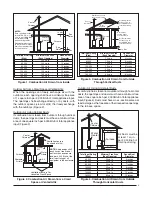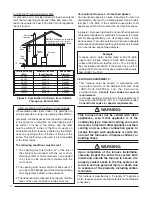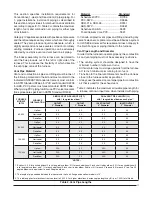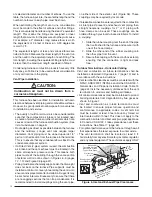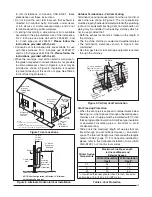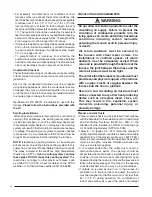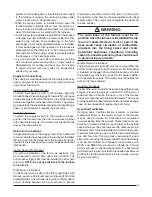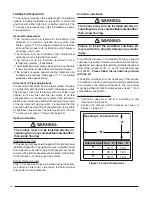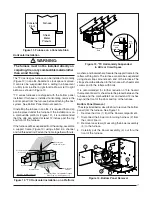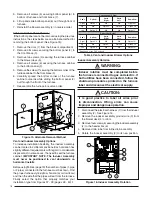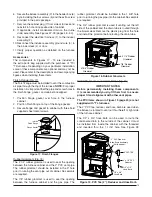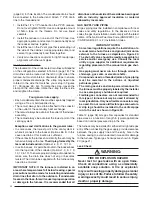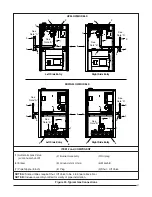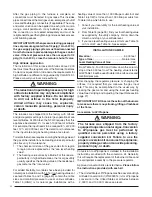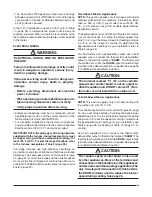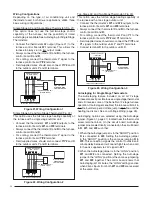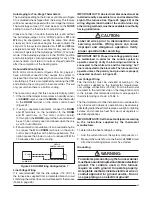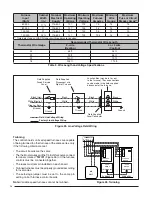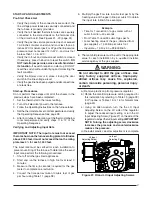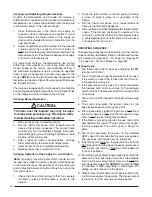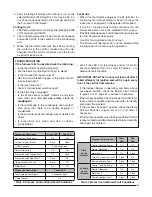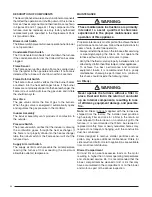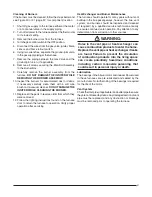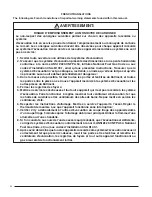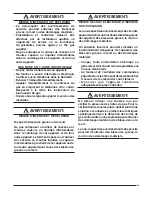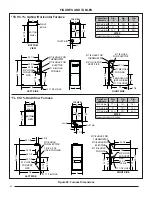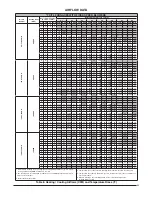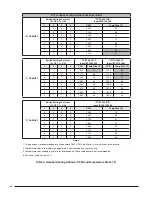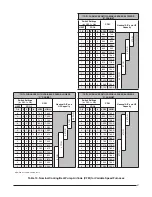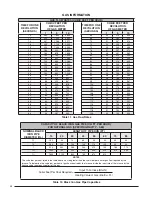
23
• The Canadian LP/Propane Gas Sea Level and High
Altitude Conversion Kit (P/N 904915) is for LP/propane
conversions in Canada at altitudes between zero and
4,500 ft. above sea level.
In the U.S., if installation is above 2,000 ft., refer to Table
13 (page 39) to determine the correct orifi ce size and
regulator pressure. When conversion is complete, verify
the manifold pressure and input rate are correct as listed
in the tables.
ELECTRICAL WIRING
WARNING:
ELECTRICAL SHOCK, FIRE OR EXPLOSION
HAZARD
Failure to follow safety warnings exactly could
result in dangerous operation, serious injury,
death or property damage.
Improper servicing could result in dangerous
operation, serious injury, death or property
damage.
•
Before servicing, disconnect all electrical
power to furnace.
•
When servicing controls, label all wires prior to
disconnecting. Reconnect wires correctly.
•
Verify proper operation after servicing.
• Electrical connections must be in compliance with all
applicable local codes, and the current revision of the
National Electric Code (ANSI/NFPA 70).
• For Canadian installations the electrical connections
and grounding shall comply with the current Canadian
Electrical Code (CSA C22.1 and/or local codes).
IMPORTANT NOTE: If replacing any of the original wires
supplied with the furnace, the replacement wire must
be copper wiring and have a temperature rating of at
least 105°F (40°C). For electrical specifi cations, refer
to the furnace nameplate or Table 5 (page 26).
Two-stage furnaces use high effi ciency circulating air
motors that come in two variations and both are controlled
differently. The fi xed speed motor control board (Figure
29, page 41) controls the torque and the variable speed
motor control board (Figure 30) controls the airfl ow at a
constant CFM. Both boards use the same furnace control
board (Figure 29).
Fixed Speed Blower Applications
NOTE:
This section applies only to furnaces with model
numbers suffi xed with two numbers, followed by a letter,
such as 35C or 45D. If your model has suffi x VA, VB,
VC, or VD, please consult the Variable Speed Blower
Application section.
The fi xed speed motor control board (Figure 29) contains
a set of dip switches for setting the blower speed. Use
pins 1 to 4 to set the blower speed for heating and pins
5 to 8 to set the speed for cooling. To determine the
appropriate switch settings for your installation, refer to
Table 8 (page 35).
For thermostats with a dehumidifi er output, use a fi eld
supplied wire to connect the thermostat’s dehumidifi er
output to the terminal marked
“DHUM”
. The thermostat
should be set so that the
DHUM
output should be high
(positive) when dehumidifi cation is needed. See page 25
for additional dehumidifi cation options.
CAUTION:
The terminal marked “Y1_IN” on the variable
speed motor control board is not an output to
drive the outdoor unit. DO NOT connect Y1_IN on
the motor control board to the outdoor unit.
Variable Speed Blower Applications
NOTE:
This section applies only to models ending with
the suffi xes VA, VB, VC, or VD.
The variable speed motor control board (Figure 30, page
41) has a set of dip switches for setting the base blower
speed. Use pins 1 to 4 to set the blower speed for heating
and pins 5 to 8 to set the speed for cooling. To determine
the appropriate switch settings for your installation, see
Table 9 (page 36) for heating or Table 10 (page 37) for
cooling.
Use fi eld supplied wire to connect the thermostat’s
dehumidifi er output to the terminal marked
“DHUM”
. The
thermostat should be set so that the
DHUM
output is high
(positive) when dehumidifi cation is needed. See page 25
for additional dehumidifi cation options.
CAUTION:
The variable speed control board is also used
by other appliances. Many of the terminals and
connections on the board are for other appliances
and are not used in the two stage application. The
only two-stage fi eld connection to this board is
the DHUM terminal, used to reduce the blower
speed during cooling. See page 26.

